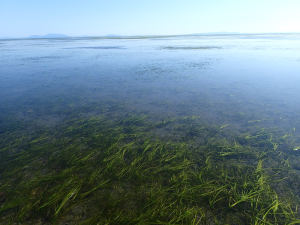
Wildlife
The otter, the urchin and the Haida
As the sea otter begins its long-overdue return to Haida Gwaii, careful plans are being laid to welcome them — and to preserve a prosperous shellfish harvest
- 3015 words
- 13 minutes
This article is over 5 years old and may contain outdated information.
Wildlife

SEA OTTER
Enhydra lutris
SARA status: Special concern
Weight: 33 to 45 kg
Length: 1.4 to 1.5 m
Height: 30 cm at shoulder
Offspring: 1 to 2 per year
Lifespan: 10 to 20 years

It was the sea otter’s coat that nearly led to its downfall. With every centimetre of skin containing 100,000 or more hairs, they have the thickest fur of any living animal. Those splendid pelts were all-too attractive to 18th- and 19-thcentury fur traders in the central and North Pacific, who by 1911 had reduced the world’s sea otter population from as many as 300,000 to fewer than 2,000. None were left off British Columbia’s coasts by 1929.
Canada was missing its smallest marine animal until 1969, when 89 Alaskan sea otters were relocated to Checleset Bay, off northwest Vancouver Island. Their numbers slowly increased, and their endangered status was downgraded to threatened in 1996, then to special concern in 2007.
While sea otters are on the upswing, the possibility of oil spills near their habitat are a significant concern. Although their thick fur efficiently traps air bubbles and acts as insulation, even a small amount of industrial oil can be lethal, breaking down the natural oils in their fur and causing it to lose its insulating properties.
In the last major study by Fisheries and Oceans Canada, done in 2008, the sea otter population in Canada was estimated at 4,700. Though their numbers are still small, their effect on the ecosystem is great. Sea otters eat sea urchins, which feed on seaweed. With the otters’ recovery, sea urchin numbers decreased and kelp forests grew back, providing a richer food source and habitat for marine life.
Are you passionate about Canadian geography?
You can support Canadian Geographic in 3 ways:

Wildlife
As the sea otter begins its long-overdue return to Haida Gwaii, careful plans are being laid to welcome them — and to preserve a prosperous shellfish harvest

Wildlife
An estimated annual $175-billion business, the illegal trade in wildlife is the world’s fourth-largest criminal enterprise. It stands to radically alter the animal kingdom.

Wildlife
On New Brunswick’s Machias Seal Island, predatory gulls are pushing endangered Arctic tern colonies to the brink, creating a dilemma for wildlife managers

Environment
Collaborative research is uncovering the secrets of coastal seagrass beds to help keep them healthy